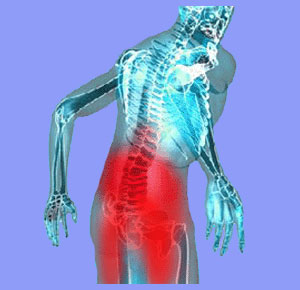
When we consider how difficult it is to really explain an accurate sciatica description, we realize why so many patients are not completely sure what qualifies the condition, since the symptoms are so variable in location, expression, severity, duration and causation. However, taking all these possible variables into account, sciatica is still very easy for us to define: Sciatica is pure hell on Earth.
Of all the dorsalgia pain syndromes, sciatica might not be the single most debilitating, but it is certainly in the top 10. However, when combined with its common partner, lower back pain, the dual symptoms can bring even the strongest person to their knees. Worse still, sciatica is one of the least often cured of all back pain scenarios, according to over 50 years of research statistics.
This essay seeks to fully describe sciatica in a manner that makes sense to all who read it. We are well versed in sciatica symptoms, since we either suffer from these symptoms ourselves or treat them in our professional practices.
Textbook Sciatica Description
According to accepted medical references and clinical descriptions of the disorder, sciatica is a neurological pain syndrome that may entail a variety of symptomatic expressions in the buttocks, legs and/or feet. Patients may experience subjective or objective perceptions of paresthesia, numbness or weakness in the affected limbs.
Sciatica can strike just one side of the body in most patients, but might also occur bilaterally in at least 20% of affected victims.
True sciatica is always caused by a problem in the lower lumbar or sacral nerve roots. Meanwhile, pseudo-sciatica can be caused by a seemingly endless number of possible sources, ranging from muscular issues to circulatory concerns and from disease processes to mindbody causations.
Does this describe sciatica? Sure. However, it certainly lacks the exclamation points that can be added by anyone who actually suffers from the syndrome.
First Hand Account of Sciatica
There is nothing like a first-person narrative to truly convey what sciatica is all about. Having suffered from sciatica myself for decades, I can describe what it is like, from a personal perspective.
Sciatica is usually random in its patterns. It can come and go. Even when it is present all the time, it usually changes in exact symptoms, perceptions or locations frequently. The pain usually burns in a linear pattern down the back or side of the leg. However, virtually any area of the lower body can suffer terrible agony.
The upper sciatica symptoms in the buttocks can destroy any attempt at maintaining good posture and can make standing a real chore. I personally get terrible soreness and cramps in my buttocks muscles and even all the way around to one or both hips.
The leg pain is present regardless of positioning in many instances, with a restful recline not providing any marked relief compared to walking or standing. There is just no escape from the pain, the tingling, the burning, the numbness and the weakness in the lower anatomy.
I often experience feelings of something actually moving around on the bottom of my left foot. It is as if a small animal was running about directly under the skin. Worse still, this is an intermittent symptom, with the tingling blinking on and off like a light bulb every few seconds.
As previously mentioned, most patients, including myself, can cope with sciatica. However, I am in the group that also suffers other dorsalgia concerns, including decades of lower back troubles and at least several years of cervical issues, as well.
When the sciatica and lower back pain occur simultaneously, which is commonplace, there is just no description that can paint a vivid-enough picture of the torment. It is as if my whole lower half is on fire and ready to tear itself apart from some unknown internal forces that vie for control of my very life. Sciatica is really that bad.
True Description of Sciatica
Living with sciatica is the only way to truly understand it and appreciate its diverse effects on overall health and wellness. We have focused on describing the physical manifestations of the condition throughout this essay, but we must also mention the significant effects on the emotional self, as well.
Sciatica is one of the most common of all chronic pain syndromes. It is one of the most difficult to truly cure. Many patients have pain that lasts for years, decades or entire lifetimes. This type of unrelenting chronic suffering enacts horrific effects on the mind and spirit. Patients can become withdrawn, depressed and even suicidal. Many patients struggle to maintain a viable career, are challenged by interpersonal relationships and even lash out in frustration at the people who love them most. Suffering from any variety of long-term pain is just as damaging to the mind, as it is to the body.





